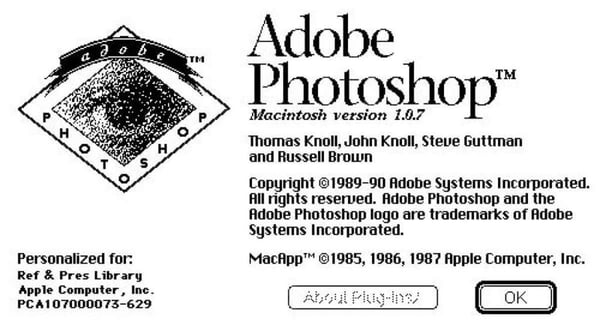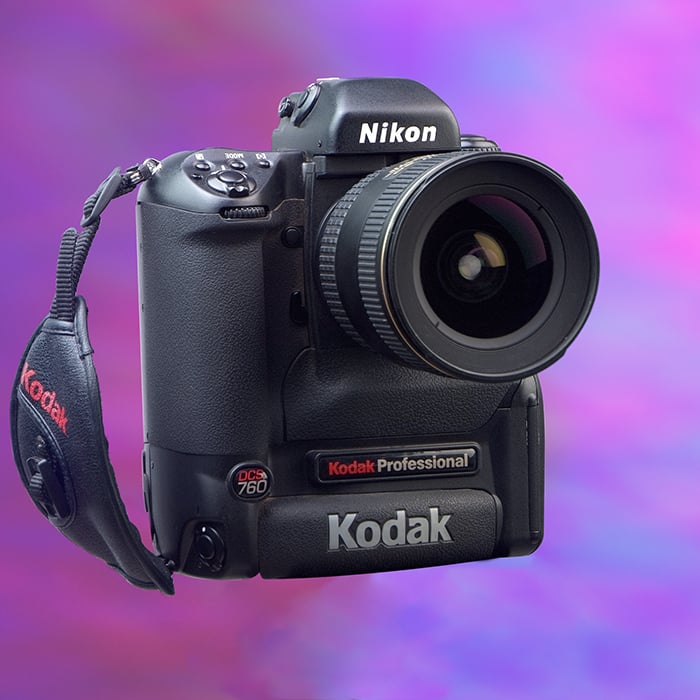Historic Disruptions in Photography (part two)
Photoshop: the Beginning of Popular Digital Photography
Twenty-six years and a few months ago, in February of 1990, Photoshop appeared on the photographic scene. Its release meant that the need to understand photography and how it worked was gone for a least a generation. Learning Photoshop in no way destroyed the need to learn photography. The opposite was actually true. That Photoshop would change the way photography was done was apparent immediately to those of us who had mastered film. We ardently began to learn how Photoshop allowed us to realize the photographs we imagined but could not create with cameras and film.
Photographers then already understood how photography worked. We also understood how to work instinctually. We learned Photoshop to create photographs that, in the age of film, were impossible to realize any other way. So began the new era of digital photography.
Learning Photoshop Before Studying Photography
Those starting out in photography have always looked to the pro to see what they had to know to realize their dream of becoming a professional photographer. They saw a whole generation of photographers learning Photoshop. They did what we were doing. For twenty years, the digital cameras with the “P” for professional setting did the heavy lifting of image capture, poorly, while the new generation of photographers spent hours refining their work with computers. The same problems that the newest photographers were fixing during endless hours on their computers were being solved by the professional photographers in their cameras.
Digital Camera Price Drop
Jump ahead again to March of 2001 for the next disruption. Prior to that date a high quality (six megapixel) DSLR cost $28,000. Kodak knocked $20,000 off of its DCS-760. Now a 6mp DSLR was an “affordable” $8,000. And so began the race by other manufacturers to create digital SLRs of high quality. This marked the moment that film started to become an “alternative process.” The cost part of practicing photography started to erode. Practicing photography no longer required buying film and paying to process it.
Digital Capture Surpasses Film Quality
Canon’s EOS1Ds at 11.1 megapixel along with, ironically, Kodak’s 14n a 14mp camera, were the first cameras to provide more resolution than 35mm film. A Kodachrome slide held about ten megapixels of data. The quality of digital capture got better and better while the cost for the cameras dropped. Full frame DSLRs were making images that surpassed medium format film cameras. At this writing some of the high megapixel cameras from Canon and Nikon are better than an 8 by 10 view camera shooting film.
Today, beginning photographers actually believe that all they need is an entry level digital camera along with a laptop running Windows or a MacBook Pro. No matter how good the automatic exposure or how well sloppy exposures can be fixed in Photoshop, a professional photographer must master photography itself in order to have a successful career over time.
Photography: The Profession
Professional photography has always had a siren-like calling. Photographers are known to be free spirits, living life on their own terms. Mastery of the photographic craft is a given. Being able to bend light to paint the story telling photograph is also a given.
At the same time, photographers are savvy business people. Photographers I know make photographs firstly because of their love for it and secondly for the money. The money, though, is the lubricant that keeps the creative photographer running smoothly. Business requires charging a price for photography that pays expenses with money left over. Profit is good. It feeds the creative side of the photographer. Professional photographers must work to find paying work that fulfills the requirements of their clients. My job is to make photographs that showcase my clients’ ideas by making images that tell their stories and make their products and services desirable to customers. All of this means the successful photographer must have a solid education (liberal arts are always good,) staying current with events and trends and keeping up with imaging technology. Don’t downplay creativity. Creativity is key… but so is always having fun.

Perceptual Barriers
iPhoneography
Camera phones can produce high quality photographs. This a barrier because the current perception by most people is that a quality photo is made on a phone. Quality photography today is more and more described by what people see on their portable screens–their phones or tablets. Social media garners positive comments no matter the reality of what is a fine photograph. Numerous “likes” do not define good photography. Anyone can get lucky and make a great photo. The professional photographer can make great photographs consistently. iPhoneography is fun, and can be good. Here’s the problem: most consumers of photography really believe that it is “good enough.”
The Disturbing Fall of Excellence
“Good enough.” I hear it all the time. “A selfie is good enough for my LinkedIn profile.” Cell phone photos of a product sitting on a desk are “good enough” for E-bay. Can e-commerce sites use them too? A lot of people just don’t know what a quality photo is. “Good enough” has become good enough to way too many.
Companies that value the power of photography show it in their advertising both in print and online. Does anyone believe that Apple uses iPhone photography of its products in their ads? The “Shot on iPhone 6” campaign is noteworthy. The quality is there, certainly. There are flaws in composition and lighting that sneak by most viewers because they are published in prominent places, so they must be great. The upside is that the iPhone 6 camera is quite good. The downside is that most people don’t understand the basics of composition and lighting and color control.
Anyway, the true bottom line is “good enough” is never good enough.
The Biggest Disruption
There is still one last disruption. It’s huge and, sadly it’s in people’s minds. They believe that all one needs to be a professional photographer is a super good camera. They actually believe that buying a fine camera means that they are now experienced, masters of photography.
Disrupting That Belief
Buying a flute makes one a flute owner, not a musician.
Buying a hammer does not make one a carpenter.
Perhaps camera manufacturers would serve the world better if they included a card as the first thing a customer sees on opening the box with their new DSLR or mirrorless or whatever camera. The front of the card would state “Congratulations on your purchase of this fine camera. You are now a professional photographer.” When opened the customer would see a scalpel attached to it along with the message “At no extra charge, you are now a surgeon too.”
_
By Kevin Ames



